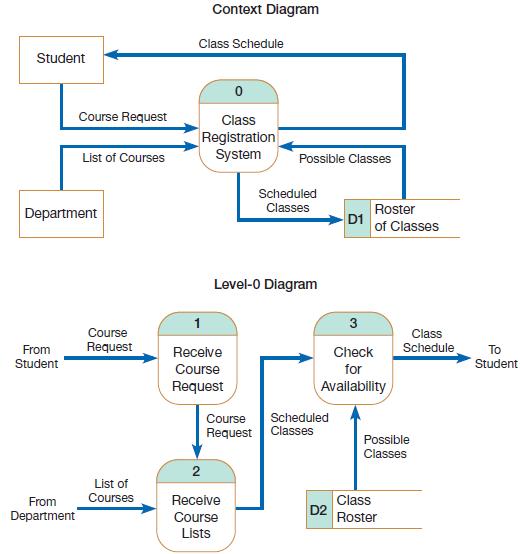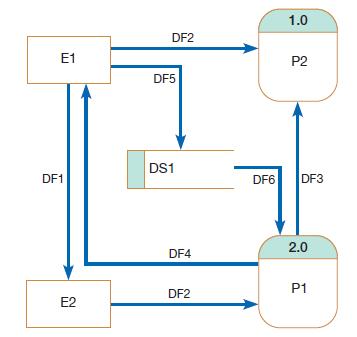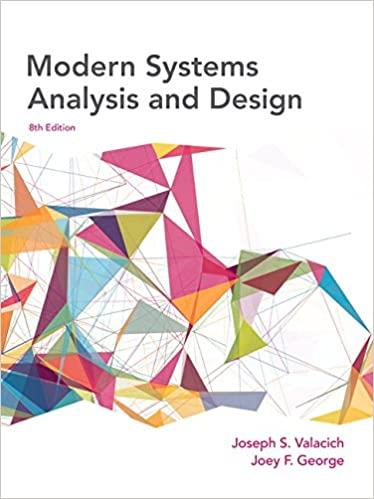Starting with a context diagram, draw as many nested DFDs as you consider necessary to represent all
Question:
Starting with a context diagram, draw as many nested DFDs as you consider necessary to represent all of the details of the system described in the following narrative. In drawing these diagrams, if you discover that the narrative is incomplete, make up reasonable explanations to make the story complete. Supply these extra explanations along with the diagrams.

Maximum Software is a developer and supplier of software products to individuals and businesses. As part of their operations, Maximum provides a 1-800 help desk line for clients who have questions about software purchased from Maximum. When a call comes in, an operator inquires about the nature of the call. For calls that are not truly help desk functions, the operator redirects the call to another unit of the company (such as Order Processing or Billing). Because many customer questions require in-depth knowledge of a product, help desk consultants are organized by product. The operator directs the call to a consultant skilled on the software that the caller needs help with. Because a consultant is not always immediately available, some calls must be put into a queue for the next available consultant. Once a consultant answers the call, the consultant determines if this is the first call from this customer about a particular problem. If it is, the consultant creates a new call report to keep track of all information about the problem. If it is not the first call about a problem, the consultant asks the customer for a call report number and retrieves the open call report to determine the status of the inquiry.

If the caller does not know the call report number, the consultant collects other identifying information such as the caller’s name, the software involved, or the name of the consultant who has handled the previous calls on the problem in order to conduct a search for the appropriate call report. If a resolution of the customer’s problem has been found, the consultant informs the client as to what that resolution is, indicates on the report that the customer has been notified, and closes out the report. If resolution has not been discovered, the consultant finds out if the consultant who handled the previous call for this problem is on duty. If so, he or she transfers the call to the other consultant (or puts the call into the queue of calls waiting to be handled by that consultant). Once the proper consultant receives the call, that consultant records any new details the customer may have. For continuing problems and for new call reports, the consultant tries to discover an answer to the problem by using the relevant software and looking up information in reference manuals. If the consultant can now resolve the problem, the consultant tells the customer how to deal with the problem and closes the call report. Otherwise, the consultant files the report for continued research and tells the customer that someone at Maximum will get back to him or her, and that if the customer discovers new information about the problem, he or she should call Maximum with the information, identifying the problem with a specified call report number.

Analyze the DFDs you created in the first part of this question. What recommendations for improvements in the help desk system at Maximum can you make based on this analysis? Draw new logical DFDs that represent the requirements you would suggest for an improved help desk system. Remember, these are to be logical DFDs, so consider improvements independent of technology that can be used to support the help desk.
Step by Step Answer:

Modern Systems Analysis And Design
ISBN: 9780134204925
8th Edition
Authors: Joseph Valacich, Joey George





